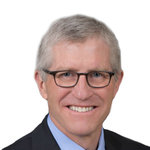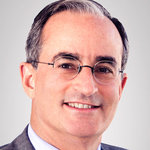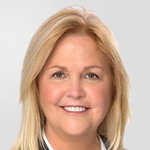
Wells Fargo & Co
NYSE:WFC

Wells Fargo & Co





In the heart of American banking history, Wells Fargo & Co. stands as a stalwart, tracing its origins back to 1852. Founded during the Gold Rush era, it began as an express delivery service of gold and other vital goods, quickly evolving into a reputable financial institution. Today, it has firmly planted its roots as a diversified, community-based financial services company. Headquartered in San Francisco, Wells Fargo operates on a grand scale with a focus on serving individuals, businesses, and institutions. Its extensive network comprises thousands of branches and ATMs across the nation, making it one of the largest banks in the United States. However, Wells Fargo's reach extends beyond borders, as it offers a vast array of financial products and services, from mortgage lending and commercial banking to wealth and investment management.
The bank's revenue engines purr through its robust portfolio of interest and non-interest income streams. Central to its operations is the traditional banking model of accepting deposits and providing loans, allowing it to earn interest spreads. Additionally, Wells Fargo generates significant fee income through services such as asset management, transaction processing, and advisory services. The bank's mortgage division remains a formidable player in the U.S. housing market, contributing a substantial chunk of its earnings. The diversified business model helps mitigate risk while capitalizing on various economic cycles and consumer needs, offering stability and growth potential. Despite facing challenges over the years, including regulatory scrutiny and reputational setbacks, Wells Fargo remains a pivotal player in the financial sector, continually evolving to meet the changing demands of the marketplace.
Earnings Calls
In 2024, Deluxe Holdings reported total revenue of $2.122 billion, slightly down 3.2% year-on-year. However, adjusted EBITDA improved 3.9% to $406 million with margins at 19.3%. The Merchant Services segment grew 5.4%, aligning with expectations, while the B2B payments segment experienced a 3.8% decline. In 2025, the company anticipates revenues between $2.09 and $2.155 billion, with adjusted EBITDA forecasted at $415 to $435 million, reflecting 2-7% growth. Notably, adjusted EPS is guided at $3.25 to $3.55, indicating up to 9% improvement. Strategic initiatives are set to drive stronger growth and debt reduction, targeting a leverage ratio of 3x by 2026.
Management

Charles W. Scharf is the Chief Executive Officer and President of Wells Fargo & Co., one of the largest financial services companies in the United States. Scharf assumed this role in October 2019, bringing with him extensive experience in the financial sector. Before joining Wells Fargo, Scharf served as CEO of Bank of New York Mellon from 2017 to 2019. Prior to that, he was the CEO of Visa Inc. from 2012 to 2016. His leadership roles also include a significant tenure at JPMorgan Chase & Co., where he was the CEO of the Retail Financial Services division and managing director at One Equity Partners, JPMorgan's private investment arm. Scharf's leadership at Wells Fargo focuses on rebuilding trust, improving the bank's governance processes, and steering it through various regulatory challenges. He is known for his straightforward, disciplined approach to management and his strategic efforts to transform the bank's operations and customer service. Scharf holds a Bachelor of Arts degree from Johns Hopkins University and an MBA from New York University.

Michael P. Santomassimo is the Chief Financial Officer (CFO) of Wells Fargo & Co., a position he has held since 2020. As CFO, he is responsible for overseeing the company's financial management, including finance, treasury, accounting, and investor relations. Santomassimo plays a key role in helping shape the financial strategy of Wells Fargo, working closely with other senior executives to ensure the bank's financial health and compliance with financial regulations. Before joining Wells Fargo, Santomassimo had a distinguished career in the financial industry. He served as the CFO at Bank of New York Mellon, where he was responsible for the company's financial management and strategic planning. He also held senior roles at JPMorgan Chase, including CFO of the consumer and community banking business. Santomassimo holds a Bachelor of Science degree in Finance from American University and a Master of Business Administration from New York University. His experience and leadership have been instrumental in navigating Wells Fargo through various financial challenges, driving efficiency, and fostering stability during periods of change. His work is central to helping Wells Fargo achieve its long-term financial goals and maintaining trust with investors and stakeholders.

Scott E. Powell is a seasoned financial executive and business leader who served as the Chief Operating Officer (COO) of Wells Fargo & Co. Prior to his role at Wells Fargo, Powell accumulated extensive experience within the banking sector, notably at JPMorgan Chase & Co., where he served as CEO of Chase Consumer Banking. His leadership was instrumental in streamlining operations, enhancing customer service, and improving the regulatory compliance framework within the divisions he managed. Powell has also held senior positions at Santander Holdings USA, Inc., including President and CEO, where he effectively navigated complex regulatory environments and executed strategic initiatives to drive growth and operational efficiency. Powell’s leadership at Wells Fargo was pivotal during a time of transformation for the bank, focusing on operational resilience, risk management, and organizational culture. His guidance helped Wells Fargo navigate challenges and align its operations with long-term strategic goals. An alumnus of the University of Minnesota and The University of Chicago Booth School of Business, Scott E. Powell’s career reflects a commitment to leadership excellence, operational rigor, and a keen focus on enhancing customer experiences within the financial services industry.

Jonathan Geoffrey Weiss is a notable figure within Wells Fargo & Co., where he has held prominent leadership roles. Serving as an Executive Officer, Weiss played a crucial role in shaping the company's strategic direction, particularly in its Wealth and Investment Management division and Corporate & Investment Banking. He demonstrated strong leadership in managing operations, focusing on delivering integrated and comprehensive financial services to meet the diverse needs of clients. Weiss' tenure at Wells Fargo was marked by his dedication to enhancing the company's market position and forging strong client relationships. He brought extensive experience and a proven track record in banking and investment management, leveraging his expertise to drive growth and improve operational efficiency. Prior to joining Wells Fargo, Jonathan Weiss had a distinguished career in the financial services industry, making significant contributions with his strategic insights and executive capabilities. His leadership was characterized by a commitment to innovation, client service excellence, and fostering a culture of integrity and accountability within the organizations he worked with. Weiss' influence and efforts at Wells Fargo were instrumental in advancing the company's objectives, strengthening its financial services offerings, and navigating the complex landscape of the banking sector.

Barry Sommers is a prominent figure in the financial industry, currently serving as the CEO of Wealth & Investment Management at Wells Fargo & Co. He joined Wells Fargo in this role in June 2020, bringing with him a wealth of experience in the banking and wealth management sectors. Before his tenure at Wells Fargo, Sommers held significant positions at JPMorgan Chase & Co. He was the CEO of the Wealth Management division within JPMorgan’s Asset & Wealth Management business. Prior to that, he served as the CEO of J.P. Morgan Securities, a leading provider of wealth management services to individuals and institutions. His career at JPMorgan Chase spanned over several years, during which he gained extensive experience and a solid reputation for leadership in wealth management. Sommers's expertise in building and enhancing client relationships, coupled with his strategic vision, has been instrumental in driving growth and innovation at Wells Fargo’s Wealth & Investment Management division. Under his leadership, the division has focused on delivering comprehensive financial advice and solutions to clients, leveraging Wells Fargo’s broad capabilities to meet diverse client needs.

Bridget E. Engle is a noted financial services executive who served as the Chief Information Officer and Head of Technology at Wells Fargo & Co. She joined the company in 2019 and played a critical role in overseeing the bank's technology strategy and operations. With a focus on innovation and efficiency, Engle worked to enhance the organization's digital capabilities and infrastructure. Before her tenure at Wells Fargo, Engle had a distinguished career in various major financial institutions. She previously held senior technology leadership roles at Bank of New York Mellon, where she was the Senior Executive Vice President and Chief Information Officer. Her career also includes significant roles at Lehman Brothers and AT&T. With extensive experience in managing complex technology functions across global financial services, Engle is recognized for her leadership in driving technology transformations and strengthening cybersecurity frameworks. Her work has helped Wells Fargo and her previous employers to adapt to evolving technological landscapes and regulatory environments.

David Owen is recognized as a prominent executive at Wells Fargo & Co., where he has made significant contributions to the company's operations. He serves as the Chief Administrative Officer (CAO), a role that involves overseeing critical administrative functions, ensuring efficient operations, and supporting strategic initiatives across the organization. With a strong commitment to leadership and operational excellence, Owen has played a pivotal role in driving improvements and fostering innovation at Wells Fargo. His strategic insights and managerial expertise have been instrumental in helping the company navigate the complexities of the banking sector while prioritizing customer satisfaction and organizational growth.

Mr. John M. Campbell serves as the Chief Financial Officer (CFO) of Consumer and Small Business Banking at Wells Fargo & Co. He has been with Wells Fargo for several years, contributing significantly to the company's financial strategy and operations. In his role as CFO, Campbell is responsible for overseeing financial planning, management, and reporting for consumer and small business banking, which includes retail banking, deposits, and small business operations. His leadership is integral to aligning the financial goals with the overall business strategy of Wells Fargo, ensuring sustainable growth and profitability in these sectors. Throughout his tenure at Wells Fargo, Campbell has been recognized for his keen financial acumen and strategic insight, playing a crucial role in navigating the company through various financial landscapes.

Ellen Reilly Patterson is a seasoned attorney and an executive leader known for her significant contributions to the financial services industry. She serves as the Senior Executive Vice President and General Counsel at Wells Fargo & Co. In this pivotal role, she is responsible for overseeing all legal affairs, guiding the company through complex legal and regulatory challenges, and ensuring compliance with the various laws impacting the bank's operations. Patterson joined Wells Fargo in 2020, bringing with her a wealth of experience from her previous role as Group Head and General Counsel at TD Bank Group. Her tenure at TD Bank was marked by her leadership in handling legal risks and managing a broad array of legal matters, including litigation, corporate governance, regulatory issues, and mergers and acquisitions. Before her stint at TD Bank, Patterson was a partner at the law firm Simpson Thacher & Bartlett LLP, where she worked extensively on corporate finance, capital markets transactions, and mergers and acquisitions. Her legal expertise and leadership skills have been instrumental in navigating the complexities of financial law and ensuring robust legal strategies for the institutions she has served. Patterson holds a Juris Doctor (J.D.) degree, which further underlines her expertise in the legal field. Her commitment to maintaining high legal standards and strategic acumen has made her a respected figure in the banking industry.

Amy Bonitatibus is a prominent executive known for her expertise in communications and financial services. She currently serves as the Chief Communications and Brand Officer at Wells Fargo & Co. In this role, she is responsible for overseeing the company's brand, media relations, external and internal communications, and social impact initiatives. Before joining Wells Fargo, Bonitatibus held significant roles in other major financial institutions. She has previously worked at JPMorgan Chase, where she served in various high-level positions, including Chief Communications Officer for Chase's consumer and community banking division. Her experience also includes working in government communications, serving as a spokeswoman at Fannie Mae during the financial crisis. Amy Bonitatibus is recognized for her strategic approach to corporate communications, brand management, and her ability to lead through challenging times. Her leadership continues to shape the public image and brand reputation of Wells Fargo as it navigates the complex financial landscape.






















































 You don't have any saved screeners yet
You don't have any saved screeners yet

Ladies and gentlemen, thank you for standing by, and welcome to the Deluxe Quarterly Earnings Conference Call.
[Operator Instructions]
Today's call is being recorded. At this time, I would like to turn the conference over to your host, Vice President of Strategy and Investor Relations, Brian Anderson. Please go ahead.
Thank you, operator, and welcome to the Deluxe Fourth Quarter and Full Year 2024 Earnings Call. Joining me on today's call are Barry McCarthy, our President and Chief Executive Officer; and Chip Zint, our Chief Financial Officer. At the end of today's prepared remarks, we will take questions. Before we begin and as seen on the current slide, I'd like to remind everyone that comments made today regarding management's intentions, projections, financial estimates and expectations of the company's future performance or strategy are forward-looking in nature as defined in the Private Securities Litigation Reform Act of 1995. Additional information about factors that may cause actual results to differ from projections is set forth in the press release we furnished today in our Form 10-K for the year ended December 31, 2023, and in other company SEC filings.
On the call today, we will discuss non-GAAP financial measures, including comparable adjusted revenue, adjusted and comparable adjusted EBITDA and EBITDA margin, adjusted and comparable adjusted EPS and free cash flow. All comparable adjusted metrics reflect the removal of impacts from business exits. In our press release, today's presentation and our filings with the SEC, you will find additional disclosures regarding the non-GAAP measures, including reconciliation of these measures to the most comparable measures under U.S. GAAP. Within the materials, we are also providing reconciliations of GAAP EPS to adjusted EPS, which may assist with your modeling. Now I'll turn it over to Barry.
Thanks, Brian, and good evening, everyone. We're pleased to report our full year results. Our march to improve profitability and strengthen the balance sheet continued during 2024. We expanded both comparable adjusted EBITDA dollars and rate for the full year and fourth quarter. We delivered consistent operating leverage for the full year growing both adjusted EBITDA and free cash flow faster than revenue.
This is our second consecutive year of delivering operating leverage. We not only reduced net debt, but also refinanced our 2026 debt maturities on attractive terms, extending all remaining maturities out to 2029. And we made great progress on our 3-year North Star plan to increase annual free cash flows by $100 million by 2026. Even as we encountered some revenue headwinds, which modestly impacted our top line growth, our 2024 results provided us a solid foundation for 2025 growth of both enterprise revenue and adjusted EBITDA. Chip will provide details, but before he does, I'd like to highlight our 2024 progress across 4 critical areas: one, the North Star program; two, improving profit performance; three, capital allocation; and four, our improved positioning for organic growth into 2025 and 2026.
First, North Star. We were cleared on our December 2023 Investor Day that 2024 was the year of North Star execution. As a reminder, North Star is our plan to increase annualized adjusted EBITDA by an incremental $80 million and free cash flows by $100 million, both by the end of 2026. This will help us accelerate debt reduction and lower our leverage ratio, both key strategic priorities that will further amplify shareholder returns. North Star yielded results in each quarter of 2024, helping to drive profit and cash flow improvement. At year-end 2024, all 12 work streams were either complete or in flight, and we completed more than 80% of the tasks to achieve our 2026 full year goals.
We will realize the profit improvement from this work between now and the end of 2026. The clearest place to see our North Star progress is in our SG&A line. You will recall our goal was to reduce corporate SG&A by 15% to 20% by 2026. For the full year 2024, we reduced expenses from corporate operations by more than $26 million or nearly 14%. We remain very pleased with our progress and are on track to deliver our 2026 goals. Second, improved profit metrics. Our improving execution also drove robust expansion of earnings metrics for the full year. Total adjusted EBITDA finished at just over $412 million for the year, while comparable adjusted EBITDA finished slightly above $406 million, increasingly by roughly 4% from prior year 2023 levels.
Our comparable adjusted EBITDA margin of 19.3% improved by a full 100 basis points from 2023 levels showcasing our increasing operating leverage. On a per share basis, we drove comparable adjusted EPS growth of 8% during 2024, finishing at $3.26 per share. Third, capital allocation. Our capital allocation priorities remain: a, investing responsibly for growth; b, reducing debt and improving our balance sheet; and c, returning capital to shareholders via the dividend.
Here's a bit more detail on each of these: a, investing for growth. In 2024, we built and launched key new products or features in each of our 4 business lines. In Merchant, we introduced the Deluxe Payment platform that includes a suite of APIs that help us enter new markets and accelerate onboarding. In B2B payments, we launched the new R36+ platform that integrates all our receivables modules with a common UI/UX helping to automate these processes.
Our core solution lower operating costs for treasurers making it easier for us to cross-sell additional modules. In Data, we completed the build-out of our cloud-native data platform, enabling us to rapidly shift [ our ] focus depending on demand and expand into new market verticals. We -- and in Print, we finished our multiyear print-on-demand installation, enabling us to deliver a superior product and variabilize operating costs and helping hold margin rates despite declining volumes. Each of these strategic investments will yield rewards in 2025 and accelerate in 2026; b, improving the balance sheet and reducing debt. Our strong cash flow performance enabled us to prove our net debt position by more than $52 million versus 2023 year-end. This debt reduction is one more step toward achieving our 2026 leverage ratio target of 3x; finally, c, returning capital to shareholders via the dividend. We maintained our regular quarterly dividend throughout 2024, which marked the 30th consecutive year we've rewarded shareholders with a quality dividend. Now the fourth of [ 4 2024 ] highlights, actions to return to organic growth. We made good progress to position the company for organic revenue growth as 2025 unfolds improving further in 2026. As we discussed all year, ongoing uncertainty within the macroeconomic environment led to some unusual quarter-to-quarter variation across our businesses.
We were particularly pleased to deliver a full year growth rate of more than 10% within the Data segment. And the merchant business delivered more than 5% full year growth, generally in lifeful year expectations. The B2B payments segment also reached an important revenue inflection point midyear, recovering from the expected first half year-over-year decline. The B2B business is well positioned to climb toward our expected mid-single-digit revenue growth profile in 2025. Across prints, the promotional solutions portion of the business experienced some demand variability, while legacy check continued its predictable and profitable trajectory. Specific fourth quarter revenue was inconsistent with our balance of year trajectory, which Chip will discuss, we remain confident in our ability to achieve our 2025 and 2026 goals. In summary, we made material progress on our most important strategic goals in 2024. Again: one, delivering on North Star; two, improving our key financial metrics; three, strengthening our balance sheet and reducing net debt; and four, positioning ourselves for improving revenue growth as 2025 unfolds and improving even more in 2026. We're confident on our pathway to our 2026 goals, including further reducing our net debt and achieving a leverage ratio of 3x or lower.
I also want to highlight the impressive talent we've been able to attract to support our mission. We are pleased to recently announce Brian Mahani joining us as the new President of Merchant Service filling the big shoes left by Debra Bradford's retirement, which we announced last year. We're grateful for Debra's leadership and service to Deluxe and equally excited for the deep and relevant experience that Brian will leverage towards further accelerating growth for the Merchant business. He's particularly well prepared for the role, having been CRO, CFO; and and a country head of one of the largest merchant acquirers in the U.S. We were also pleased to announce the addition of Bo Cummins to our Board. Bo most recently was Vice Chair of Truist. Over his distinguished banking career, he ran nearly all aspects of banking business from investment commercial and retail banking, treasury services, payments using data-driven market and more. His experience and banking perspective is directly relevant to our business, enabling him to bring much to our Board table. We see the quality and depth of these individuals choosing us as an additional validation that Deluxe has transformed into a trusted Payments and Data company.
Finally, before I pass this to Chip, I want to thank my fellow Deluxers for another solid year. I'm proud of their unwavering dedication to our customers and the communities that we serve and for their continued commitment to Deluxe a trusted Payments and Data company. Chip, now over to you.
Thank you, Barry, and good evening, everyone. As Barry noted, we were pleased with 2024 progress across key priority areas and particularly our comparable adjusted EBITDA growth and improvement of overall net debt during the year. I'll begin tonight by reviewing some consolidated highlights for the year before moving on to operating segment results and updated 2025 guidance. For the full year, on a reported basis, we posted total revenue of $2.122 billion, down 3.2% inclusive of the impacts of our late 2023 payroll exit while down just 1.2% year-over-year on a comparable adjusted basis. We reported full year GAAP net income of $52.9 million or $1.18 per share for the year, improving from $26.2 million or $0.59 per share in 2023. This increase was primarily driven by improved operating results and lower restructuring spend net of the lost income from divestitures. Full year comparable adjusted EBITDA was $406 million, improving $15.3 million or 3.9% from the prior year comparable adjusted results.
Adjusted EBITDA margins were 19.3%, improving 100 basis points, as Barry noted. Full year comparable adjusted EPS came in at $3.26 improving from $3.02 in 2023, primarily driven by the benefits of North Star, along with lower interest and taxes, partially offset by higher depreciation and amortization.
Now turning to operating segment details, beginning with Merchant Services. For the full year, Merchant segment revenue finished at $384 million, growing by 5.4% versus 2023 results. We were pleased with this full year growth trajectory at the lower end of our longer-term mid-single-digit or higher growth outlook for this segment. [indiscernible] adjusted EBITDA finished 2024 at $78.5 million, improving by 5.5% and in line with the revenue trajectory versus the prior year, while margins finished at 20.4%, consistent with our expectations and roughly flat versus the full year 2023 margin rates. Merchant revenues for the fourth quarter finished at $95.5 million, which was roughly flat versus Q4 of 2023. Recall that we signaled continued moderation of the merchant trajectory during last quarter's call. This isolated fourth quarter result was driven most materially by our lapping of the large conversion with Fulton Bank, which took place during the fourth quarter of 2023.
Lesser impacts included some pockets of softness across the balance of the portfolio and quarter-to-quarter timing impacts across a few less discretionary verticals. Merchant fourth quarter adjusted EBITDA finished at $20.2 million or 21.2% of revenue, declining 5.2% versus our strong Q4 2023 results. This line was primarily driven by the revenue trajectory and some overall channel mix dynamics across the quarter. Our guidance ranges for 2025 reflect our ongoing expectation for sustained mid-single-digit growth merchant segment revenues. We remain confident in our ability to drive this outcome based on our robust pipeline of new FI partners, either currently signed or in queue for 2025, an additional merchant adds across direct, ISO and ISV channels. We have assumed a fairly stable ongoing macro environment across our broader guidance ranges. Importantly, we expect that our onboarding of new FI partner and other wins will accelerate as 2025 progresses. Our expectation is that these activities will drive sequential improvement of our Merchant segment growth rates towards the noted mid-single-digit levels with a slower start in the first half, ramping to make back half growth stronger than the first. Finally, our 2025 guidance further assumes sustained margin levels in the low 20s range for the merchant business, consistent with both our 2024 results and longer-term guidance.
Shifting to results within the B2B payments segment. B2B revenues finished the year at $287.9 million, reflecting a [indiscernible] decline of 3.8% versus the prior year. As we anticipated, we continue to see improvement from the roughly 8% decline rates experienced over the first 2 quarters of 2024 as we've continued migration of our treasury management solutions towards an increasingly recurring subscription-base set of software offerings.
Additionally, as we finish the year, we continue to onboard incremental share gains across our legacy lockbox business as discussed last quarter. 2024 adjusted EBITDA for B2B came in at $57.1 million, reflecting a 19.8% margin. This reflected a 7.9% decline from the prior year results driven by the first half revenue trajectory and our continued migration of the business model towards expansion of our SaaS offerings. Margin rate remained consistent with our expectations and our longer-term high teens expanding to low to mid-20s profile. For the fourth quarter, B2B segment revenue finished at $73 million, roughly flat versus 2023. Q4 adjusted EBITDA finished at $14.5 million, reflecting 19.9% of revenue, in line with the full year margin rates for the segment.
Adjusted EBITDA for the quarter declined 16.2% versus the fourth quarter of 2023. These adjusted EBITDA results continue to reflect some outsized impacts across our receivables suite of offerings both from continuing implementation expense for lockbox share gains and overall continued receivables mix shifts from prior year nonrecurring business. We would not forecast these inflated period costs to recur throughout all of 2025. Within our 2025 guidance ranges, we anticipate B2B revenues returning to a low single-digit growth profile to begin the year and to climb towards our longer-term mid-single-digit forecast sequentially, as Barry noted during his comments. Our expectation for accelerating B2B growth and increased penetration of AR automation software space, in particular, over the full year guidance range underpins this trajectory.
Our 2025 full year outlook for the segment continues to incorporate adjusted EBITDA margin assumptions scaling from the high teens to low 20s range sequentially, consistent with the levels seen over the 2024 full year results.
Moving now to our particularly strong 2024 results within the Data segment. Overall, as Barry noted, the data-driven marketing business exceeded expectations as full year revenue finished at $234 million, reflecting 10.5% growth versus 2023. This strong trajectory continued to demonstrate our success partnering with our customer base to deploy an optimized set of marketing capabilities. This growth was accompanied by strong margin expansion during 2024 as adjusted EBITDA finished at $60.5 million, reflecting a 25.9% margin rate, growing 30.7% versus the prior year.
Drivers of this adjusted EBITDA expansion included the double-digit revenue growth trajectory, continued optimization of core operating expenses in the segment, including benefits from North Star execution, and a continuing favorable overall mix of DDM campaign activity during the year. We were pleased to see these trends extend across both our core FI customer base as well as expanding adjacent customer markets. Fourth quarter Data revenues finished at $55.9 million, reflecting year-over-year growth of 26.8% as we rebounded from the lapping of very strong prior year comps during both the second and third quarters. Q4 adjusted EBITDA finished at $12.3 million expanding more than 68% year-over-year on the drivers noted within my full year commentary while the margin rate finished at 22%, returning toward our signaled longer-term low 20s expectation range for the Data segment.
You will recall this business is best measured over a multi-quarter performance period as some specific period lumpiness from the timing of customer spend exists with CDM. While the business remains campaign-oriented in nature, we continue to benefit from the increased scale and growth of our revenue base, contributing to a more seeable intra-year quarterly growth outlook. Our full year 2025 guidance ranges incorporate an expectation for sustaining mid- to high single-digit Data revenue growth going forward. We remain confident in the sustainable growth profile for these offerings across a wide array of trigger-based demographic and other Data supported marketing outreach. Our EBITDA guidance incorporates Data margins sustaining in the low to mid-20s margin profile that we have communicated within our longer-term horizon outlook.
Shifting finally to our Print businesses. This segment finished 2024 with $1.21 billion in annual revenue, reflecting an overall decline of 4.5% versus the prior year 2023 level, consistent with our low to mid-single-digit secular trajectory expectation. Legacy check revenues declined at 2.5%, while the balance of promotional solutions offerings declined by 7% for the year. In addition to our continuing focus on printed offerings with the promo, leveraging our broad manufacturing platforms, we've also seen some uptick in competitive marketing investment across the space toward the lower margin profile, promo and apparel and branded accessory areas, in particular. These trends have driven some softness across our largely third-party source offerings in these areas, including some of the traditional Q4 seasonality seen in our prior year comparison.
Adjusted EBITDA for Print finished the year at $376.6 million, declining 6.1% versus 2023. This result was largely in line with the overall top line trajectory when adjusted for specific nonrecurring accounts receivable reserve adjustments discussed during second quarter call in late July. Importantly, full year 2024 margins finished at 31.3% for the segment remaining strongly aligned to our internal expectations and guidance across the Print portfolio. Fourth quarter Print revenues were $295.7 million, declining 7.1% versus Q4 of 2023 as we lap some prior year pricing actions within the specific quarter and reflective of the broader full year trends noted within my earlier comments specific to the Promotional Solutions suite of products. Q4 adjusted EBITDA footprint remained strong, finishing at $94.4 million. This reflected a 31.9% margin rate for the segment, consistent with both our full year and longer-term guidance rate expectations.
Our guidance ranges for 2025 reflect our consistent and predictable year-to-year expectation for secular declines across Print, driving a revenue trajectory remaining in the low to mid-single-digit decline range. We have consistently managed these businesses to drive revenue outcomes at or better than these rates. We remain confident in our ability to sustain these levels while also targeting a flat overall margin rate profile remaining in the low 30s range over the course of our 2025 guidance horizon.
Turning now to our balance sheet and cash flow. We ended the year with a net debt level of $1.47 billion, down $52.2 million from $1.52 billion last year consistent with our ongoing commitment to debt reduction as a top capital allocation priority for the enterprise. Our net debt to adjusted EBITDA ratio was 3.6x at the end of the year, remaining flat versus a year ago partially as a result of the removal of adjusted EBITDA contribution from business exits. As we've noted, our long-term strategic target remains approximately 3x leverage. Free cash flow, defined as cash provided by operating activities less capital expenditures, was $100 million, up from $97.7 million in 2023 driven by lower in-year cash restructuring spend and reduced year-over-year capital expenditures despite the loss of cash flows from business exits. We remain pleased with the overall trajectory of our free cash flows and our ability to continue reducing our net debt consistent with our clear delevering priorities.
Our Board approved a regular quarterly dividend of $0.30 per share on all outstanding shares. The dividend will be payable on March 3, 2025 to all shareholders of record as a market closing on February 18, 2025. We are delivering this dividend for the 30th consecutive year while continuing our responsible investment for growth. As Barry mentioned, during the fourth quarter, we also refinanced our scheduled 2026 debt maturities. In early December, we closed on our updated $500 million term loan and $400 million revolver facilities, along with issuance of a new $450 million secured bond, all carrying 2029 maturities. This refinance structure aligns our full updated maturity ladder out to 2029, coinciding with our remaining unsecured bond maturity. We were very pleased with the execution in the capital markets along these lines as we maintained a top-tier bank syndicate supporting our institutional capital and saw strong demand for our new bond issue upsizing from the original $400 million expectation. We expect our overall blended interest rate to remain around 7.5% moving forward, fairly consistent with our prior structure, and we are pleased to push out the 2026 maturity wall to an extended horizon providing us with ample ongoing liquidity to support our growth efforts. As a result of the updated debt stack, we also unwound our prior interest rate swap positions during the fourth quarter with a largely neutral in year settlement impact.
Overall, our fixed to floating ratio stood at roughly 60-40 as of year-end. This balance insulates us to get some ongoing uncertainty around the timing and magnitude of interest rate changes while we will benefit from an expected lowering rate trends moving through the updated maturity horizon.
Turning now to our 2025 outlook. I'm pleased to share our overall guidance ranges for 2025. Our ranges for the full year are as follows: revenue of $2.09 billion to $2.155 billion, reflecting negative 1% to positive 2% to comparable adjusted growth versus 2024. Adjusted EBITDA of $415 million to $435 million, reflecting between 2% and 7% comparable adjusted growth. Adjusted EPS of $3.25 to $3.55, reflecting flat to 9% comparable adjusted growth and free cash flow of $120 million to $140 million reflecting growth of 20% to 40% versus our 2024 results. And to recap my previous segment assumptions, we expect both Merchant and B2B to ramp sequentially toward mid-single-digit growth rates as 2025 progresses. While Data remains strong mid- to high single-digit growth and Print will continue the low to mid-single-digit secular decline rates. Margins for Print will remain stable in the low 30s, while B2B remain in the high teens to low 20s and both Merchant and Data will maintain low 20s profiles as well.
Further, we expect modest efficiency improvements across our corporate operations and spending following our significant 2024 progress. Also, in order to assist with your model, our guidance assumes the following: interest expense of approximately $120 million and adjusted tax rate of 26%; depreciation and amortization of $140 million, of which acquisition amortization is approximately $45 million, an average outstanding share count of approximately 45.5 million shares and capital expenditures between $90 million and $100 million.
To summarize, we were pleased with the overall full year progress and our prospects for continuing to drive expanded operating leverage in 2025. We expect to deliver material improvement within our free cash flow conversion an accelerated deleveraging trajectory and concurrent growth across all 3 of our Payments and Data businesses. Each of these expectations are consistent with our clear ongoing value creation formula and we remain confident in our overall progress against our focused capital allocation priorities. Operator, we are now ready to take questions.
[Operator Instructions]
First question comes from the line of Kartik Mehta with Northcoast Research.
Barry, maybe just your thoughts on the Merchant business. Maybe just the fundamentals within the business. What you think is going well and maybe areas you'll focus on in 2025 now that there's a new leader for the business?
Sure. Appreciate the question. We're very pleased with the progress we continue to see in the Merchant business overall. Since we acquired the business, we are beating all of our expectations for that business. And specifically, in 2024, we invested to improve the capabilities of our business. This is something we call the Deluxe Payment platform, which is a suite of APIs that makes it easier for ISVs and other partners to connect to us and to allow us to grow in new marketplaces. We're very excited about Brian Mahaney joining us. He joined us most recently from Elavon, one of the largest merchant acquirers where he served as the CRO, the CFO. He ran their business in Mexico and started his career in strategy and product. He's off to a great start. He just started a couple of days ago on Monday, but we expect -- and I expect that he will continue the work and the effort we have on improving the product, helping us penetrate new market verticals and reaching other pockets of growth that we have not traditionally attacked.
And Chip, you're going to see significant improvement in free cash flow 2025 versus 2024. Can I just walking through the primary drivers, if there's any onetime benefits? Or this is just a reflection of better operating results.
Yes, Kartik. So first, before I even answer your question, I just want to acknowledge, we're really pleased with the progress we've made in this space over the last 18 months. It's been a personal focus of mine. If you look backwards, 2023 was very back-end loaded as we had to really optimize our working capital to deliver the number we did. And our initial guide last year was a range of $60 million to $80 million, which because of execution and a smooth start to the year, we improved as the year went on, finally landing at the upper end of the range at $100 million. So as you look ahead to this year and the guide and the substantial improvement that we're projecting, it's in line with the things we've been telling you guys all along that as we execute the North Star program, we will wind down the restructuring spend. We're in the final year of the related spend for the project.
So as I look at this year, think of it as a function of the benefit of the improving profitability, the lower restructuring spend starting to show its way through and then some offsetting pieces around some conservative thoughts around working capital because, obviously, I can't continue to optimize working capital every single year. And so those are the key building blocks that get me to where I am here. But I think you should just remain confident in our focus and our ability to execute in this space and continue to drive our progress towards that overall North Star goal, which was to increase by $100 million on an annual basis from where we were when we started the journey. So great progress so far, feeling really good and really pleased with the guide here to start the year.
And just one last question. I think, Chip, you mentioned on the Print business, there's obviously a little bit more competition on that low-margin business. I know in the past, you've always said that the product you'd like to offer because it's something that your customers want. Is there anything you could do to help offset the pressure? Or is this just something you have to kind of accept because it's a full -- you want to provide a full-scale product to your customers?
I mean, I think the one thing we're not going to do is chase low-margin deals just for the sake of holding on to the top line. Obviously, that promo business has a lot of relationship value to it. And our ability to sell and still grow that business in places is important to managing the overall secular decline, which I think we've done a really good job on. So I would just say it remains a priority, and we continue to focus the sales teams on how they can optimize what they do offer the business we bid on and how we, of course, operate most efficiently with the deals we win, but you're not going to see us radically invest in marketing and chase really low deals and dilute our margins.
We're very proud of those blended low 30s margins in Print. And we have a very clear focus on what the Print business is inside of Deluxe. It's here to deliver cash flows and relationships to help fund this transformation and fund the growth in Payments and Data. And so we have to stay true to those priorities and make sure we just manage it on an efficient basis. So I think you're going to see continued focus in that space, but we're not going to change who we are.
The next question comes from the line of Jonnathan Navarrete with TD Cowen.
It's Jonnathan on for Lance. I'll follow up with -- just any thoughts on tariffs. Do you guys have any tariff-related headwinds that can impact your supply chain particularly for materials used in print or perhaps technology components and merchant services?
I appreciate the question, Jonathan. But we don't think that's going to have significant or material impact for our operation. Most of our things that are used in our Print business specifically around checks and paper are produced domestically. Of course, some of the items in the promotional side of the business may be produced outside of the country. But you'll recall that is the lowest margin part of our business. So I think there's a natural hedge for us against any issue there. Will tariffs impact our customers ultimately, I don't have a crystal ball, but as far as direct impact in our business, we don't anticipate much direct impact.
Got it. And my last one is just how much pricing flexibility do you have in the merchant business? And can you maybe break down how much of the growth in 2025 is likely to come from pricing versus volume?
Sure. We don't disclose sort of those individual elements. But what I would tell you is that we compete and win in the space because of the way we can differentiate how our customers have great experience. And so if you were to visit 1 of our facility in Fort Worth, where we do customer support, it's a giant case that are filled with awards of a group called [indiscernible], which is a sort of equivalent for J.D. Powers. And it shows that we are the best in our industry, and that's how we win business today. Of course, price is important. But yes, we take price twice a year on a routine basis. And we've been able to price for those services, and we believe that will be a part of our formula going forward. But of course, it's new logo wins or new partners, it's more volume as well as price, it's also more features, by the way, I mentioned that in the last answer that we've added features, functionality, specifically with the Deluxe Payment platform that makes it easier and faster for customers to connect to us.
Next question comes from the line of Charles Strauzer with CJS Securities.
Just given the kind of outperformance in data, maybe Barry, you give us some examples of incremental revenue wins in that segment that helped drive the upside?
Sure, Charlie. So recall that in this business, we help customers identify people to target for whatever product or service they're trying to sell. And one of the places where we've invested over the last couple of years is to move our entire data asset to the cloud so that allows us to quickly reposition and help customers target regardless of what product they're looking for. So if there's demand for targeting credit cards. We can do that. If there's targeting for low-cost deposits, if a property and casualty insurer is looking for new customers, et cetera, because we've made these investments and now have what we believe is the largest consumer and small business marketing data lake out there. We're able to take on business and execute quickly. And I think in the fourth quarter, you saw that -- once again, we had enormous demand across multiple parts of the business, both financial institution and nonfinancial institutions. We're looking to market in the fourth quarter. Honestly, we believe to help them get launched into 2025 strong. And we continue to expect that we will have continued wins like that. But we do think over the course of '25 and beyond, some of the very significant variations, the lumpiness of the business, may get a bit more smoothed out as we expand and diversify across more market verticals. Very, very pleased with the performance of that business, and we think it's a real testament to the quality of the data we've assembled and the way we're managing it in a truly cloud-native way.
Excellent. And just maybe talk a little bit about the 2026 goals. You talked about in the past about Merchant Services needing -- potentially driving high single-digit revenue CAGR through 2026. Can you talk about some of the drivers behind those numbers as well?
Sure. So just as a refresher, Charlie, we're really pleased with the overall success of the merchant business. You'll recall that a year ago, in the fourth quarter, we boarded and went live with what was the largest single customer win ever in the formerly First American, now Deluxe Merchant Services business, which was with the bank called Fulton Bank. We believe we have the right to win more banks. We think you'll hear from us in coming quarters about wins that we have in the banking sector, but we're not just focused on the banking sector. We also have great footprint with integrated software vendors independent sales organizations and certain parts of specialty retailer places like auto repair. We've also got a great footprint with state and local government as well as not-for-profit. And because we've made these investments in the Deluxe Payment platform, we can reach additional market verticals faster than we have been able to before, and we're very excited about the prospects with that business -- what that -- those new tools will bring to our business. And so we put all those things together, and we think that we -- this has been a mid- to upper single-digit revenue growth business and we think over the coming quarters and into 2026 as some of these wins that we anticipate take hold and go live, we believe we have the opportunity to expand the rate of growth there over time.
And just one for Chip, if I could. Chip, how should we think about the cadence of quarterly results through the year, given your initial guidance?
Yes. So what I said in the prepared remarks, and I'll just repeat it here, just so I'm clear, we would think from a revenue perspective that both B2B and Merchant are going to start in low single-digit growth and expand sequentially as the year goes on. Barry just talked about the tough comp that the Merchant business was kind of coming up again and the growth they've overcome. So we think that's a growth number that expands as the year goes on. So I would say, think of the overall modeling as a B2B and Merchant start at low single-digit growth, improve as the year goes on, while simultaneously data is going to continue that trend we've been telling you about, look at the rolling 3 quarters, how it's been improving. So that's going to imply data having another strong Q1. Barry already said it, we think some of that lumpiness quarter-to-quarter is going to go away. So we think Data is going to have a good growth trajectory throughout the year just continuing to deliver great results. And we would continue to expect the Print side to be in that low to mid-single-digit decline rates.
So at the highest level, revenue to me is going to be a little bit more on the flat side in the first half of the year and obviously expanding the growth profile as the year goes on and specifically B2B and Merchant grow faster. In terms of modeling the margin side, we talked about the pieces, B2B, the profile is going to be high teens margins to start the year expanding towards the mid-20s as the year goes on and it will blend to kind of the low 20s across the year, Data is going to stay in kind of the low 20s to mid-20s range throughout the year depending on the quarter and the volume. Merchant's going to stay in the low 20s, which is what it's been doing consistently. And then we have high confidence Print will kind of stay in that blended low 30s. So each BU will do what it needs to do. And then lastly, incredibly pleased with what corporate did a year ago. We've been talking a while about driving efficiency in corporate.
I would not expect that to reoccur here in 2025. We still have a little bit more work to do on corporate, which I think will come in the 2026 journey of North Star. So to me, you should expect a modest low single-digit improvement in corporate, and it's going to be roughly stable as the year goes on. I don't see any reason for it to be real lumpy as the year goes on. So I think if you put all those pieces together, you'll get a sense of a cadence and a year that shapes up to the operating leverage as the year continues to go on, like we've shown in the last 2 years and obviously ramping to a good place as the year progresses.
[Operator Instructions]
Your next question comes from the line of Marc Riddick with Sidoti.
I wanted to check to see if there were any any thoughts or anything that you saw as far as client demand changes following the presidential election and then whether or not you've seen any initial green shoots of business confidence? And if so, if there are any particular verticals that stood out since the election.
That's a lot of questions in one, Marc. So let me start by telling you that I -- So I don't have a crystal ball, but I can't sort of share with you some of the big themes that we see. First of all, our business, one of the great things about this company and the businesses where we compete today is that we when commerce happens, we win. And so as long as transactions commerce is happening, we win because we're standing in the right intersection and we gain any time the transactions happen or the economy moves. So specific to your question about the change in administration, I think it's just way too soon to have any sort of real meaningful insight in that. As far as overall confidence, you see the same things we do that consumer spending seems solid. But we think there's a little bit of a tale of 2 cities there with folks with more discretionary income, spending more and doing a little better than the folks that have less discretionary income. And we can see that sometimes in some parts of our business, which we talked about all year with some lean towards more -- less discretionary categories and away from more discretionary.
Certainly, we don't think that changed as the year ended, and it's too early to say what it means in the new year. But what we can tell you is that in our guidance ranges, we are assuming and our base assumption is that conditions are largely stable. That we're not expecting a large upward improvement. We're not expecting downward movement we think a continuing stable environment is what we have modeled and how we've framed our guidance.
Great. And you made mention in your prepared remarks about new products and future introductions for -- across the enterprise, including Deluxe Pay. And I wanted to sort of get your thoughts as to the potential cadence going through this coming year of continuing that? Or are there any particular areas that you think might be right for additional innovation, whether it's customer-facing or internal efficiency driven.
I appreciate the question. I want to be really clear, we are very focused on making appropriate investments with a great hurdle -- with achieving our very solid hurdle rate, and we're very focused on B2B payments, Merchant services and Data-driven marketing. And that's where the majority of our new product investment is headed. Underlying, you've heard us talk for a couple of years about infrastructure investments we've made to move our entire operating platform to the cloud. And we are now at the place where we can start leveraging that by adding additional products and features at a faster pace because we can do it one time in the cloud rather than in multiple different iterations.
So I think over the course of this year and certainly through '26, you'll see us add -- continue to add additional features and functionality in each of those 3 businesses. I think you're aware that in our B2B business, we're very focused on the receivables business where we launched our 360 Plus last year, which is a unified common UI/UX that puts together all the different factors and modules that a customer would use from us that helps them manage receivables. In the B2B space, we've already talked about the Deluxe Payment platform, Deluxe Pay which brings additional mobile feature functionality. And in the Data space, we're continuing to invest in that database and data architecture in the cloud. So you will hear us continue to talk about additional products and features that help us compete for new business and win.
This does conclude today's question-and-answer session. I would now like to turn the call back to Brian Anderson for any additional or closing remarks.
Thanks, Rachel. Before we conclude, I'd like to share that management will be attending the JPMorgan Global High Yield and Leverage Finance Conference, February 24 through 26 in Miami and the 2025 Wolfe FinTech Forum March 11 and 12 in New York during the quarter. Thank you again for joining us today, and we look forward to speaking with you all again in late April as we share our first quarter 2025 results.
This does conclude today's call. Thank you for your participation. You may now disconnect.